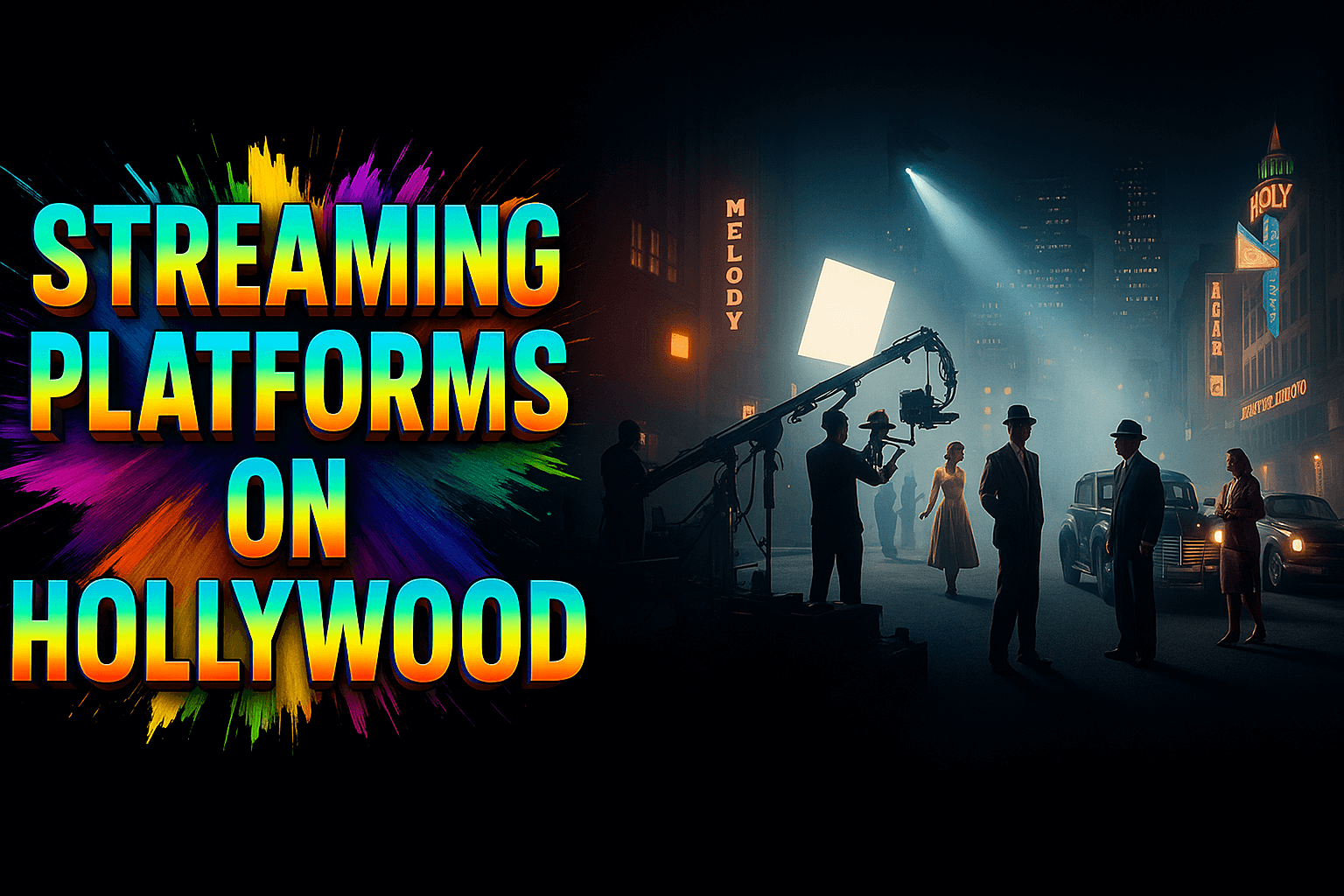The Impact of Streaming Platforms on Hollywood: A Strategic Briefing for Executives

Introduction
The rise of streaming platforms has triggered a seismic shift in the global media and entertainment industry, fundamentally altering the traditional Hollywood business model. For decades, the film industry operated on a predictable, sequential release “window” model: first theatrical, then home video, and finally television.
This system, while reliable, was disrupted by the meteoric rise of companies like Netflix, Amazon Prime Video, and Disney+, which have now become major financiers and distributors of content.
This transformation extends far beyond just how audiences consume content; it has reshaped everything from film financing and distribution strategies to the creative and production processes.
This article provides a strategic briefing on the impact of streaming platforms on Hollywood film, analyzing the core changes and their long-term implications for the industry’s senior leadership.
Table of content
Key Takeaways
| Core Challenge | Hollywood executives must navigate a rapidly evolving landscape where traditional business models are being replaced by new, data-driven strategies for content production and distribution. |
| Strategic Solution | Adopt a business intelligence and analytics-first approach to decision-making, understanding new revenue streams and the role of creative freedom in securing top talent. |
| Vitrina’s Role | Vitrina is a leading platform that provides real-time, verified intelligence on global film and TV projects, companies, and decision-makers to help executives navigate and master the entertainment supply chain. |
The Disruption of Traditional Distribution Channels
The most visible impact of streaming platforms on Hollywood film has been the erosion of the traditional theatrical window. For decades, a film’s success was measured almost exclusively by its box office performance.
Streaming has changed this by offering an alternative—and often immediate—path to the audience. This has led to a fundamental re-evaluation of the long-standing 90-day theatrical exclusivity model.
Many studios have experimented with hybrid release strategies, where films are released simultaneously in theaters and on a streaming service, as Warner Bros. did in 2021.
According to a 2024 academic paper from USP, the launch of Netflix’s streaming service in 2007 was associated with a 14% to 17% reduction in domestic box office revenues.
While blockbuster franchises still perform well in theaters, smaller and mid-budget films increasingly find their primary home on streaming platforms.
This shift has not only forced cinema chains to innovate with premium viewing experiences to attract audiences, but has also created a new challenge for the entire entertainment supply chain: how to measure a film’s success in a world where box office receipts are no longer the sole metric of value.
New Models for Film Financing and Revenue
Beyond distribution, the rise of streaming has profoundly altered how films are financed and how they generate revenue. The traditional model, which relied on a complex web of box office splits, home video sales, and broadcast licensing deals, has been replaced by a subscription-based revenue stream.
Streaming platforms, driven by the need to acquire and retain subscribers, have become major financiers of original content. According to a 2025 report from ResearchGate, studios now earn approximately 80% of a feature film’s gross revenue from secondary and ancillary markets, which include streaming, on-demand, and other digital rights.
This shift provides new financing opportunities for filmmakers, especially for independent projects that might have struggled to find a theatrical path. Streaming services often offer a clear, up-front budget in exchange for global distribution rights, which provides a more predictable financial path for a project.
This has also changed the definition of a film’s success from a measure of ticket sales to one of subscriber engagement, completion rates, and the value it adds to a platform’s library.
How Creative Freedom Is Attracting Talent
One of the most significant, yet less publicized, consequences of the streaming revolution is its effect on creative control. Many creators, from established directors to up-and-coming showrunners, have been drawn to streaming platforms due to the promise of greater creative freedom.
Unlike traditional studios that are often constrained by the need for mass-market appeal to ensure box office returns, streaming services prioritize building a diverse and compelling catalog to attract niche audiences.
This has enabled the production of more experimental, genre-bending, and internationally focused content. For instance, platforms have provided a home for prestige projects that might have been deemed too risky for a traditional theatrical release, such as Martin Scorsese’s The Irishman (2019) on Netflix, which had a budget of $160 million.
This willingness to take creative risks has led to a new dynamic in talent acquisition, where artists are increasingly choosing to partner with streamers to tell stories that would not have been possible in the old studio system.
This is reshaping the power dynamic between talent and studios, and has been a major factor in the recent industry-wide labor disputes over compensation in the new digital age.
How Data and Intelligence Are Powering the New Hollywood
The modern Hollywood film industry is a data-driven enterprise. Streaming platforms operate on a business model that provides them with an unprecedented amount of data on viewing habits, content preferences, and audience engagement.
This intelligence is being used to guide content acquisition, development, and financing decisions. Rather than relying on intuition or a limited number of test screenings, platforms use analytics to greenlight projects and inform their content slate.
This has made the need for market intelligence more critical than ever for all stakeholders, from studios to independent production companies. Executives need to know which genres are trending in specific territories, which creative teams have a strong track record, and how a project is progressing in real time. Vitrina is a key enabler of this data-driven approach.
The platform provides verified intelligence on over 500,000 global projects and 160,000 companies, allowing executives to identify potential partners and track projects from development through to release.
By providing a single source of truth for industry activity, Vitrina helps studios and producers navigate a new world where making a smart, data-informed decision is a significant competitive advantage.
Conclusion: A Data-Driven Approach to Competitive Advantage
The impact of streaming platforms on Hollywood film is undeniable and irreversible. From the redefinition of revenue models to the empowerment of creative talent, the digital revolution has rewritten the rules of the game.
The traditional theatrical business model has been replaced by a more fragmented, yet more flexible, system of content consumption. For executives, succeeding in this new environment requires moving beyond outdated operational models and embracing a data-driven approach to strategy.
Understanding the global entertainment supply chain, from project development to distribution, is no longer a matter of intuition, but a matter of intelligence.
By leveraging platforms that provide verified data on industry trends, projects, and key players, executives can make proactive, informed decisions that not only mitigate risk but also unlock new opportunities for growth and profitability in the digital age.
Frequently Asked Questions
Streaming platforms have largely eliminated the traditional 90-day exclusive theatrical window, opting for shorter windows or simultaneous theatrical and streaming releases to maximize audience reach and engagement.
Streaming films operate on a different financial model. Their success is measured by their ability to attract and retain subscribers, rather than by a single box office performance, making a direct comparison of revenue difficult.
Many filmmakers are attracted to streaming platforms because they often offer greater creative freedom, more predictable financing, and a direct path to a global audience for projects that may not fit the traditional theatrical model.

























